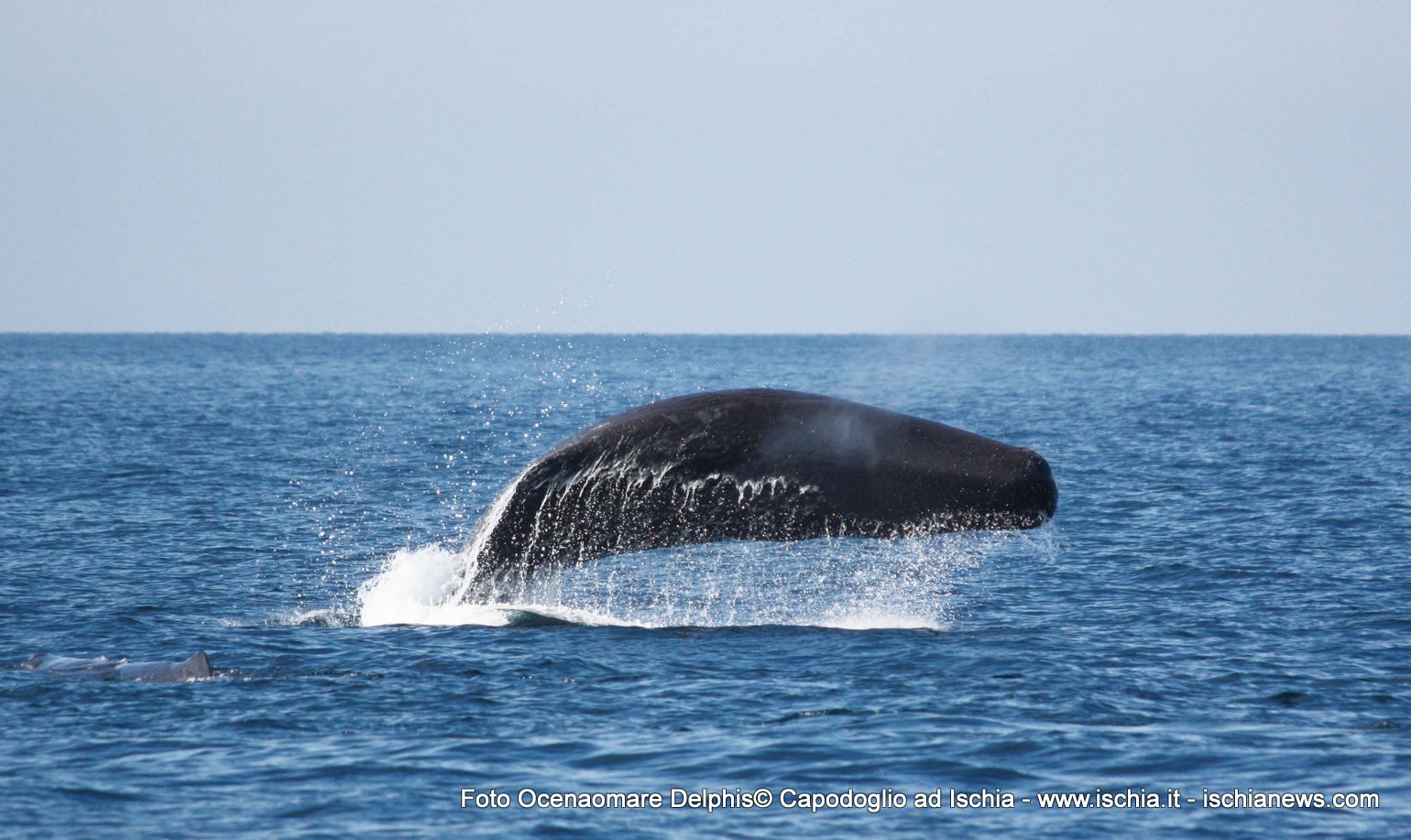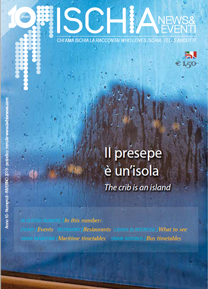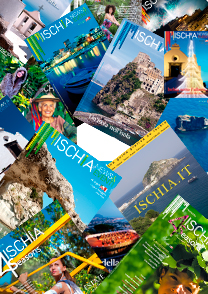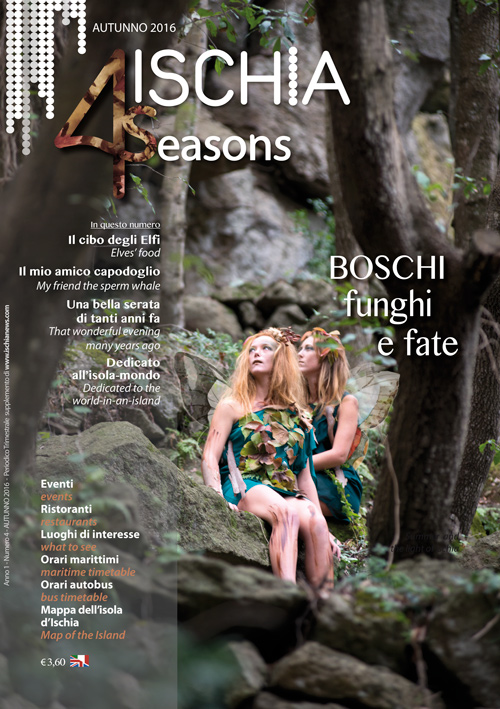My frend the Sperm Whale
 The summer mist had a different density but it was beginning to clear. Nicola held fast the tiller and stared at his son who, rocked by the sound of the engine of the small fishing boat, between sea sprays and light breezes, had fallen asleep in the prow near the nets just ten minutes after weighing anchor.
The summer mist had a different density but it was beginning to clear. Nicola held fast the tiller and stared at his son who, rocked by the sound of the engine of the small fishing boat, between sea sprays and light breezes, had fallen asleep in the prow near the nets just ten minutes after weighing anchor.
It was not the first time that Salvatore had left the coast with his father but never so early. Nicola had promised him, after his continual insistence every evening before bedtime, that at day light he would be taken to the deep submerged valley known as the Canyon of Cuma between Ischia and Ventotene to observe the sperm whales.
The Canyon is the feeding and reproduction ground of the cetacei and the whole area is visited by a population of whales divided into different groups. ‘Adults’ already recognised through the many meetings and studies conducted by the Onlus Oceano Mare Delphis, and the just arrived ‘children’ and solitary.
“Unfortunately we are dealing with a threatened species. However this year there have been approximately 60 sightings – thought Nicola – which meant that the sea, even though mankind continued to violate and abuse it, is still repaying us with its beauty.” Observing his son who had just turned 13, ready with a small camera given to him by his parents on his birthday a few days ago, a smile crossed his face similar to that of a boat sliding through the clean surface of the sea. The smile was fed by the idea that maybe in a very small way and with a piece of infinitesimal love, which he had spread in the world, it was also by his merit that the Mediterranean was repopulating in a vivid and fertile nature.
His father had been a fisherman like him. They both shared a passion for the sea, the same which he hoped to pass on to Salvatore in every way and on any occasion. Unfortunately his grandfather who had only know his grandson until he was 2 years old had passed on. Sometimes Salvatore remembered with the happiness of a child that huge man with a “prickly but soft beard” or when he spoke about his old hands, full of experience and fatigue when they went for long walks from the beach of San Pietro to the Port. However, Nicola on remembering his father became overcome by a sadness which had the taste of
emptiness although impressed in his memory was an image of a proud and determined man who always knew what he could catch and how to behave in difficult situations. The sea in itself had been a Master and had taught him. Without holding back.
Above all, fixed in the walls of the soul, was a scene to which Nicola had been a witness: the gratitude that his father expressed in the ritual of touching the land every time he returned home safe.
He whispered to the mighty Poseidon “thanks my friend” to have allowed him to gather his daily catch while his hands where cupping salty water to splash on his head.
He had never underestimated the authority and fascination of that world, which for him was a font of learning and spiritual nourishment. Nicola smiled at the idea that Salvatore one day would show the same respect for that which at the same time was a font of both tumultuous and chaotic calm. Meanwhile the sound of the waves which beat and slid against the keel kept him company. He was concentrating on the motive which had stimulated his son’s curiosity for sperm whales. There had to be a reason if his desire for research had
spread like water from a fountain in the depths of nothing, to emerge on the surface and actually move the need for knowledge.
Maybe the reasons were due to lines from Herman Melville’s novel written in 1851which Salvatore read before going to sleep. It describes the adventures of Ismael, the deep hate and a thirst for vendetta of Captain Acab, commander of a cannibal whaler, decorated with cetacei bones, the Pequod and its crew. The motives and the adventures of the search for the white whale with a “hump as big as a mountain of snow”, Moby Dick.
Or maybe from the story which narrates of the finding in the morning of 23rd April 1770 on the beach of Citara, of a whale measuring between 8 and 10 metres. The fishermen who found the remains of the giant called it “Cachelotto”. The episode represents the first beaching of a predator of such large dimensions in the Campania area and was painted by an artist from Forio called Gennaro Migliaccio, currently conserved in the National Museum of San Martino in Naples.
A large piece of jawbone measuring approximately 3 metres is displayed in the Museum of Il Torrione in Forio, a witness to the event of the death of the whale, due to a cankerous injury in its tail, probably caused by a cannon ball.
In that period it took 637 people working for 17 days at a total cost of 306,56 ducats to destroy the body of the “great monster of Citara”.
Or, maybe Salvatore’s curiosity could be recognized uniting these two tales. One maintains the charge of realism which contrasts to symbols and allegories, the other pictures a fact which brings man to reflect that the sea is a living body, hidden in which is the surprise of discovering the terror of sea monsters which live within. A world of water which still has much to teach mankind. As the love narrated between the male whale beached at Forio and the female who was found beached a short while later on the coast of Apulia.
Whatever it was, Salvatore had been so enchanted he had been unable to sleep the night before, knowing that he would weigh anchor early in the morning. Suddenly, the seas opened at roughly 20 metres from the prow of the small boat. A dark grey mark appeared on the surface and a low and wild blow signalled the presence of Salvatore’s greatest wish. Before Nicola could even call him he was already standing up to immortalise it with a photo. “Dad, it’s bellissimo” exclaimed Salvatore. Nicola thought “Yes my dear son, it’s true. It’s bellissimo” and smiled.
Oceanomare-Delphis Onlus
(www.oceanomaredelphis.org)
promotes knowledge and conservation of cetaceans and marine biodiversity, implementing non-invasive studies and education programs, raising public awareness about cetaceans and the marine environment. Science and knowledge are crucial for the understanding of the natural world and humans impact: collaboration among scientists, professionals of conservation techniques, administrators and policy-makers is essential to incorporate scientific information in management decisions of ecosystem.
Civic Museum of the Tower of Forio.
Open daily, closed on Mondays. Opening Hours: from 9.30 to 12.30 and from 19 to 21.30. Ticket 2 €. It is the main museum of Forio, managed by the cultural association Radici and is among the most distinctive museums of the island of Ischia. The tower is formed by two rooms, on two levels. The first hall hosts exhibitions of artists and events, while in the upper there is a permanent exhibition dedicated to the famous painter, sculptor and poet Giovanni Maltese.
di Graziano Petrucci





























